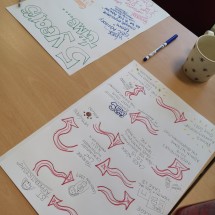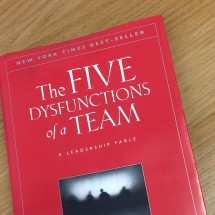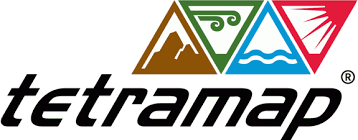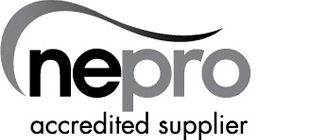Personality Profiling – How do we use them?
We use a range of profiling tools here in our work at Change & Transformation and people often ask us about them. In fact, we quite often get contacted by clients who just want us to run some profiling with their teams. Whilst we have, of course, seen lots of benefits to teams of learning more about their different individual profiles, we always respond to clients to ask them more about why they want this and what role it is going to play for that team. That’s because we’ve also had our fair share of tricky experiences with profiling too.
Back in the 90s I was lucky enough to join the graduate scheme at Procter & Gamble and through this I got exposed to lots of really interesting and useful personal development. This included my first introduction to Myers Briggs Type Indicator profiling (or MBTI for short). Like most people coming across these kinds of tools for the first time, it blew my mind to see this kind of tool reflect-back my own preferences and ways of going about things in such a clear way. And, of course, this helped a lot in understanding where my weaknesses might be and what I needed to work on. But here’s the rub (and, by the way, I must mention that MBTI isn’t used in this way at P&G anymore), my profile popped out and it was very different to the expected profile for someone in my role. In fact, it was very different to the expected profile for someone in the company. And, there was a lot of talk about a certain profile and how strongly linked it was to success at P&G. Straight away this got me wondering about my position, could I be successful? Was I in the wrong job? And, to some extent, it got others wondering it too.
Things have moved on now, and we know more about the need for diversity of thinking and approach in organisations (read Rebel Ideas by Matthew Syed if you’re in any doubt), and we also know that preference or profile is not limiting in the way we previously thought. And the experience that many of us had during the early years of using profiling at work has helped guide and steer the use of these kinds of tools to ensure that they have a more positive, enabling impact.
One of the ways we do this is by linking the use of the tool to the aim of the work. We might use profiling to help a team under pressure understand the natural preferences of team members to help the group become more efficient by capitalising on them. We might help individuals earmarked for leadership positions become more authentic natural leaders by developing their own self-awareness and helping them make use of the strengths their preferences bring. Or we might build stronger bonds between the members of a team which is just forming by using some light-touch profiling as a way of allowing teams to share a bit more about themselves and open-up to the group.
The tools we use are diverse now too. MBTI gets to the heart of the individual and their deep, unchanging preferences. Belbin looks at how an individual is behaving now in a team, and incorporates an element of feedback from others. TetraMap uses metaphors and imagery to bring things to life in a fun and light-hearted way – the sound track is awesome too!
So what are your experiences of using profiling tools at work? We’d love to hear! And if you’re interested to talk to us about how we could use them to help you and your team, don’t hesitate to drop us a line. We’d love to chat.










